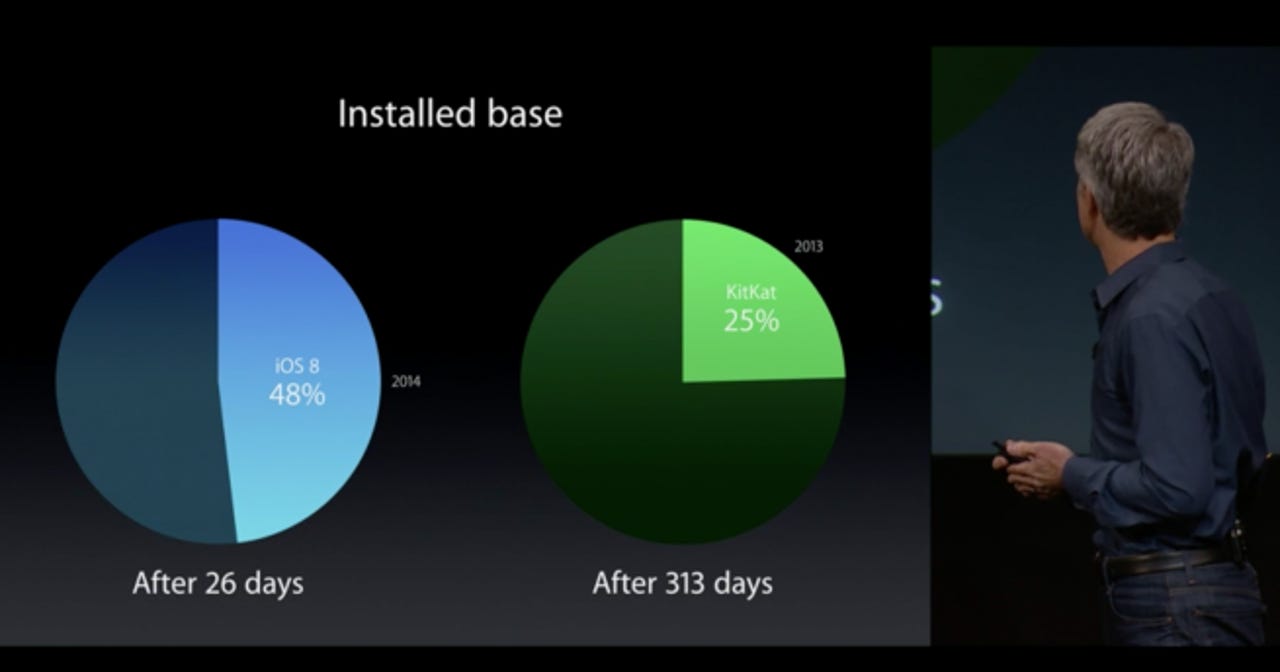Here's how Apple will ensure your iPhone can fit the iOS 9 upgrade

Getting as many of its iPhone and iPad users on the latest version of iOS is very important to Apple.
If you doubt that, you've never seen the company compare its iOS adoption rate with those who run the latest version of Android.
And Apple does that every chance it can get since it has a key advantage: It not only has total control over the software but it pushes updates directly to iPhones while Android device makers typically have to work through network providers, which delays the process.

With iOS 8, however, Apple ran into a challenge. Not every iPhone had enough free storage to download, unpack and install the new software. The workaround was for iPhone owners to use a computer with iTunes for the update and it slowed uptake for the new software. It appears people won't need this workaround for iOS 9.
The current developer preview of Apple's newest software has a new feature that will temporarily uninstall apps to free up space for the upgrade, based on this tweet and screenshot from Kaleb Butt.
This approach is exactly what my colleague Adrian Kingsley-Hughes suggested last year when struggling to get the iOS 8 update on his iPhone.
Featured
He manually removed apps and data to free up storage capacity, installed the update and then re-installed the apps he deleted. And he was right back then: This process should be automated. It appears Apple agrees; at least at this point. It's possible the process changes between now and when iOS 9 is generally available.
Apple's approach to manage on-device storage will also be augmented by something the company calls "app thinning," which it announced earlier this month at its WorldWide Developer Conference.
Apple says app thinning will "optimize the installation of iOS and watchOS apps by tailoring app delivery to the capabilities of the user's particular device, with minimal footprint." The company is also shrinking the size of the iOS 9 update compared to the prior version.
While many think Apple should simply stop selling iPhones with 16 GB of storage -- I agree and suspect that will change with the next iPhone -- these software approaches will help the company maintain its edge when it comes to having most devices running the latest and greatest version of iOS.